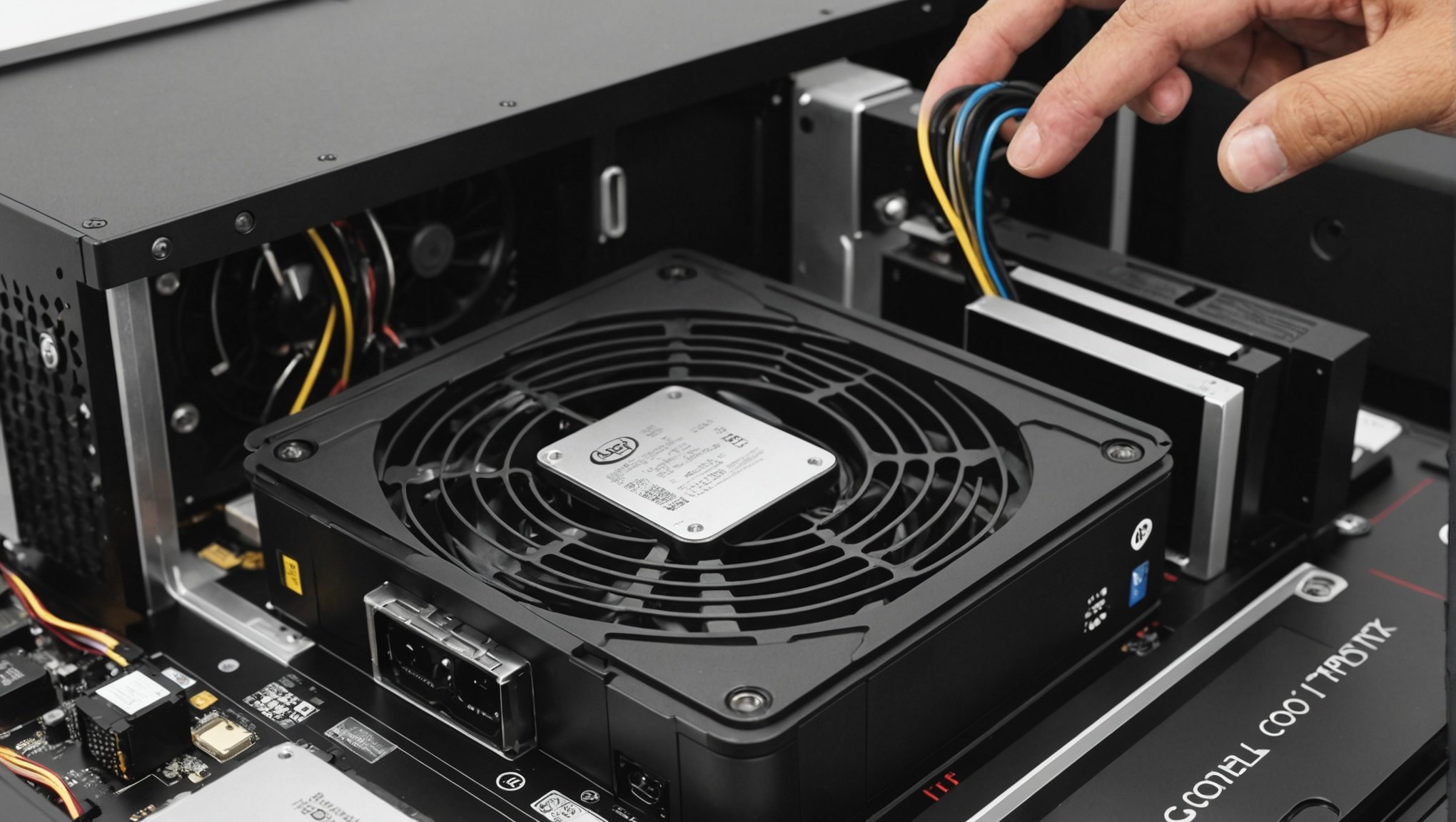In the world of Small Form Factor (SFF) builds, where space is limited, maintaining optimal cooling and airflow can be a tricky endeavor, particularly with a high-performance CPU like the Intel Core i7-10700K. Ensuring your compact case remains cool under pressure requires a well-thought-out approach, considering the confined dimensions and the thermal demands of modern components. This article provides a comprehensive guide to achieving efficient airflow and cooling in your SFF case, maximizing performance while safeguarding hardware longevity.
Understanding the Thermal Needs of the Intel Core i7-10700K
The Intel Core i7-10700K, while boasting impressive performance, generates significant heat, especially under load. Before diving into specific cooling solutions, it is crucial to understand the thermal requirements of this processor. The i7-10700K, with its base frequency of 3.8 GHz and the ability to boost up to 5.1 GHz, possesses a TDP (Thermal Design Power) of 125 watts. This figure is indicative of the heat output your cooling solution must handle.
Also read : How to set up a multi-room audio system using Apple HomePod Mini and a Synology NAS?
Considering the compact nature of SFF cases, efficient heat dissipation becomes even more challenging. Inadequate cooling can lead to thermal throttling, where the CPU reduces its clock speed to prevent overheating, subsequently diminishing performance. Therefore, selecting an appropriate cooling solution tailored to the i7-10700K is paramount.
Key Cooling Solutions for SFF Builds
- Air Cooling: Traditional air coolers are popular for their simplicity and effectiveness. In an SFF case, low-profile CPU coolers are often favored due to their compact design, which fits within tight spaces. Models like the Noctua NH-L9i or the Cryorig C7 are renowned for balancing performance and size.
- Liquid Cooling: For those seeking enhanced cooling performance, AIO (All-in-One) liquid coolers provide an attractive alternative. They offer superior heat dissipation and can be mounted in various orientations to optimize space usage. The Corsair H60 or the NZXT Kraken M22 are excellent choices for SFF builds.
- Custom Loop Cooling: Although more complex and expensive, custom loop cooling systems offer the ultimate in cooling performance and flexibility. These setups involve custom tubing, radiators, and pumps tailored to your specific build, ensuring peak thermal efficiency.
Optimizing Airflow Within the SFF Case
Effective airflow management within an SFF case is crucial for maintaining optimal temperatures. Given the limited space, strategic placement of components and fans can significantly impact overall cooling performance. The goal is to create a balanced airflow that efficiently removes heat from critical components.
Also to read : What are the best practices for setting up a secure IoT network using an ASUS RT-AX88U router?
Strategies for Enhancing Airflow
- Fan Placement and Orientation: Proper fan placement is essential in an SFF build. Typically, intake fans should be positioned at the front or bottom of the case, drawing in cool air, while exhaust fans should be placed at the top or rear, expelling hot air. This setup creates a directional airflow path, minimizing hotspots.
- Cable Management: Cluttered cables can obstruct airflow, leading to increased temperatures. Utilize cable ties and routing channels to keep cables organized and out of the airflow path. A clean interior not only looks better but also improves cooling efficiency.
- Positive vs. Negative Pressure: Positive pressure (more intake than exhaust fans) can help reduce dust accumulation, while negative pressure (more exhaust than intake) can enhance heat removal. Experiment with different configurations to find the optimal balance for your specific case.
- Use of Dust Filters: Dust accumulation can impede airflow and reduce cooling efficiency. Ensure your SFF case is equipped with dust filters on intake fans, and clean these filters regularly to maintain optimal airflow.
Selecting the Right SFF Case for Optimal Cooling
Choosing the right SFF case is a foundational step in ensuring effective cooling and airflow. Not all cases are created equal; some are specifically designed with enhanced ventilation and cooling provisions, making them more suitable for housing high-performance components like the i7-10700K.
Factors to Consider When Choosing an SFF Case
- Case Size and Volume: SFF cases vary in size, typically ranging from mini-ITX to micro-ATX form factors. Ensure the case you select accommodates your cooling solution and other components without compromising airflow. Compact cases like the NCASE M1 or the Cooler Master NR200 are popular for their thoughtful design and cooling capabilities.
- Ventilation and Fan Mounts: Look for cases that offer multiple fan mounts and ample ventilation. Mesh panels and well-placed vents can significantly improve airflow. The Louqe Ghost S1, for instance, features a modular top hat system that allows for additional cooling options.
- Component Compatibility: Verify that your chosen case supports the dimensions of your cooling solution and other hardware. Some SFF cases have strict height limitations for CPU coolers or restricted space for radiators, so ensure compatibility before purchasing.
- Build Quality and Material: High-quality materials and build craftsmanship can influence thermal performance. Cases made from aluminum or steel often offer better heat dissipation compared to plastic. Additionally, robust construction ensures longevity and durability.
Monitoring and Managing Temperature Levels
Once your SFF build is assembled, ongoing monitoring of temperature levels is essential to ensure sustained performance and hardware health. Utilizing software tools and implementing proactive management strategies will help maintain optimal operating temperatures.
Effective Temperature Monitoring Tools
- Software Utilities: Numerous software utilities are available for monitoring CPU and system temperatures. Programs like HWMonitor, Core Temp, and MSI Afterburner provide real-time temperature readings and can alert you to potential overheating issues.
- BIOS/UEFI Monitoring: Most modern motherboards include built-in temperature monitoring within the BIOS/UEFI interface. Accessing this interface allows you to view temperature readings and adjust fan curves for optimal cooling performance.
- Hardware Monitoring: For more advanced users, hardware monitoring solutions such as thermal probes and external display panels offer precise temperature tracking. These devices can provide additional insights into your system’s thermal dynamics.
Proactive Temperature Management
- Fan Curve Adjustment: Fine-tuning fan curves can help balance noise and cooling performance. Adjusting fan speeds based on temperature thresholds ensures fans ramp up during heavy loads and remain quieter during idle periods.
- Regular Maintenance: Periodic maintenance, including cleaning dust filters, reapplying thermal paste, and ensuring fans are operating correctly, is crucial for sustained cooling performance.
- Overclocking Considerations: If you plan to overclock your i7-10700K, be aware of the increased thermal demands. Ensure your cooling solution is capable of handling the additional heat output, and closely monitor temperatures to prevent overheating.
Ensuring optimal cooling and airflow in a compact SFF case housing an Intel Core i7-10700K is a multifaceted challenge that requires careful planning and execution. By understanding the thermal needs of your CPU, selecting the appropriate cooling solution, optimizing airflow within the case, choosing the right SFF case, and monitoring temperature levels, you can achieve a well-cooled and high-performing system.
Whether you opt for air cooling, liquid cooling, or even a custom loop, the key lies in striking a balance between performance, temperature management, and space constraints. With the right approach, you can harness the power of the Intel Core i7-10700K within a compact SFF build, ensuring your system remains cool, efficient, and ready to tackle any task you throw at it.











